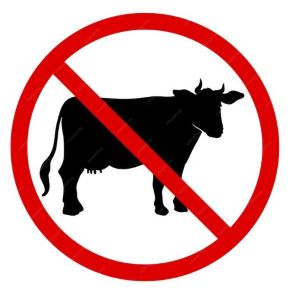Twelve Percent of the U.S. Population Is Responsible for Half of U.S. Beef Consumption
A recent study investigated what the study researchers called “disproportionate beef consumption” in the United States. They defined disproportionate beef consumption as eating more than 4 ounces of beef per day. Using a large survey of U.S. adults, they determined that 12% of the adult population consumed more than 4 ounces of beef per day. This 12% of the adult population was responsible for fully half of beef consumption in the United States (1).
Who is eating these “disproportionate” amounts of beef? They are more likely to identify as male than as female. They are more likely to be non-Hispanic White than non-Hispanic Black or Asian. Younger (18-29 years old) and older (66 years and older) adults are less likely to be “disproportionate beef consumers.” Family income does not appear to play a role.
Almost a third of the beef consumed was in the form of different beef cuts such as steak, brisket, ribs, and pot roast. The other categories in the top five sources of beef were burgers, mixed dishes containing beef (such as meatloaf and beef stew), burritos and tacos, and cold cuts.
These “disproportionate beef consumers” are markedly exceeding recommendations. For example, the EAT-Lancet Planetary Health Diet calls for an upper limit of half an ounce per day of red meat (beef and lamb) (2). The 2020-2025 Dietary Guidelines for Americans U.S.-style Dietary Pattern limits total meat, poultry, and eggs to 4 ounces per day for those with a 2200 calorie diet (3).
Meat production has serious environmental impacts. Identifying and implementing programs to influence those who consume the most beef to greatly reduce their beef consumption (or, even better, to eliminate meat entirely) could have beneficial environmental effects as well as offering health benefits.
References
- Willits-Smith A, Odinga H, O’Malley K, Rose D. Demographic and socioeconomic correlates of disproportionate beef consumption among US adults in an age of global warming. Nutrients. 2023;15(17):3795.
- EAT-Lancet Commission Brief for Everyone. https://eatforum.org/content/uploads/2019/01/EAT_brief_everyone.pdf. 2019.
- U.S. Department of Agriculture and U.S. Department of Health and Human Services. Dietary Guidelines for Americans, 2020-2025. 9th Edition. DietaryGuidelines.gov. 2020.
To read more about meat’s environmental effects see:
Carbon Footprint of Vegan vs. Meat Pizza
The Water Footprint of a Vegan versus a Meat Burrito

